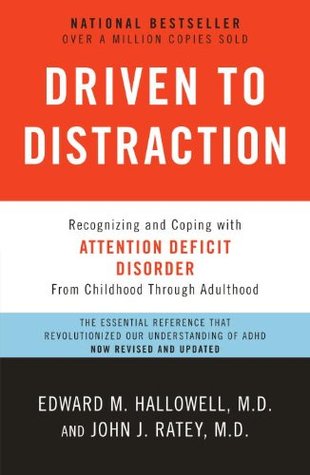More on this book
Community
Kindle Notes & Highlights
8. Easy distractibility, trouble focusing attention, tendency to tune out or drift away in the middle of a page or a conversation, often coupled with an ability to hyperfocus at times. The hallmark symptom of ADD. The “tuning out” is quite involuntary. It happens when the person isn’t looking, so to speak, and the next thing you know, he or she isn’t there. The often extraordinary ability to hyperfocus is also usually present, emphasizing the fact that this is a syndrome not of attention deficit but of attention inconsistency. 9. Often creative, intuitive, highly intelligent.
13. Tendency to worry needlessly, endlessly; tendency to scan the horizon looking for something to worry about, alternating with inattention to or disregard for actual dangers.
Daydreamed a lot in class as a child.
Have lots of ideas but have a hard time structuring things so they actually happen.
Often have a hard time finding the right word so impulsively say any word or just stay silent and feel stupid.
Stream-of-consciousness way of doing housework—hop from this to that with no apparent logic, just a schedule.
6. Do what you are good at, instead of spending all your time trying to get good at what you’re bad at.
Without structure, no matter how much talent there may be, there is only chaos.
Many adults with ADD have not fulfilled their considerable creative potential because they have been unable to shape and direct their creative energies.
Structure refers to essential tools like lists, reminders, notepads, appointment books, filing systems, Rolodexes, bulletin boards, schedules, receipts, IN- and OUT-boxes, answering machines, computer systems, alarm clocks, and alarm watches.
Through the use of pattern planning you can streamline your life considerably.
is remarkable how much mental energy the planning of these humdrum, everyday tasks can take, and how easy pattern planning can make them.
They often forget them, quite literally, and so stop working toward them. If they say they don’t know what their goals are, try to help them define them. Goals function as a kind of guard against aimlessness, drawing the individual through time toward a desired place.


